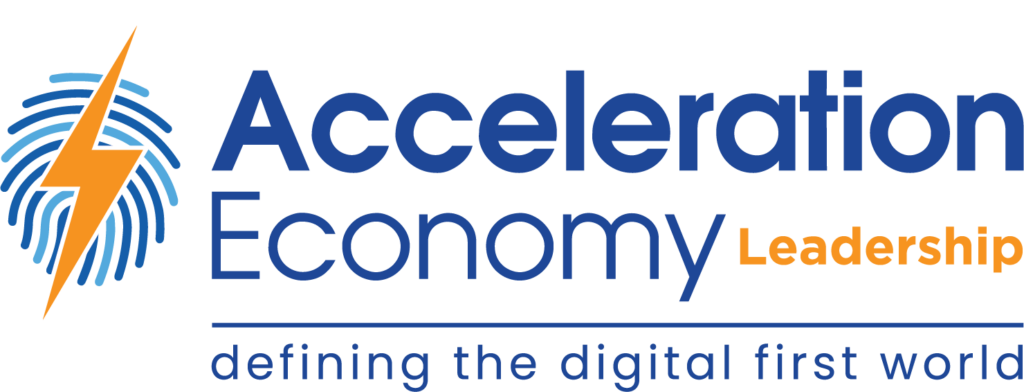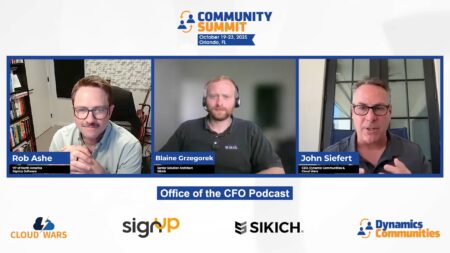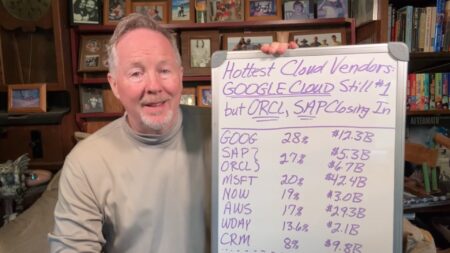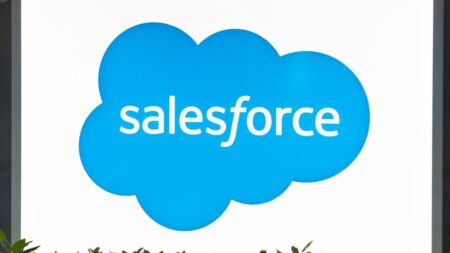In episode 27 of the Growth Swarm podcast, John Siefert, Bob Evans, Tony Uphoff, and Scott Vaughan look at the recent Q3 earnings results for the Cloud Wars Top 10, which, in John’s words, represent “areas of dichotomy.” In other words, there’s some good news and some bad news, and it’s all in the interpretation. Even in the face of uncertain economic times, many companies are doubling down on innovation, technology, digital transformation, and getting the help of partners to do so. New technologies like hyperautomation and low code/no code are enabling companies to implement modernization for future acceleration even as revenue grows more slowly. There’s a lot to consider when reading the tea leaves of earnings results, as you’ll learn in this week’s episode.
Highlights
01:33 — Looking at the earnings reports from the perspective of a business leader, caution must be exercised as the threat of a recession and economic uncertainty infiltrates the world. However, business leaders must also ensure their organizations are “tuned up and ready to roll” when the economy turns for the better.
02:32 — There have been mixed results from the Cloud Wars Top 10 companies in the most recent quarter – Salesforce grew 14% in Q3, with nearly $8 million in total revenue, thought it was just shy of the $8.23 billion (7.84 billion euros) that SAP, a figure 5% higher than Salesforce’s $7.84 billion, for the comparable period. Workday and Snowflake also had strong quarters. These “big numbers reflect a bullish attitude among business leaders,” Bob adds. There is a great deal of strength in the vendors’ numbers, which represents the idea that buyers feel they “have to be in this game.”
03:55 — John suggests that organizations are focused less on “how to cut investments” and more on “doubling down in areas” that will help organizations grow in uncertain times. Workday is focusing more on its partner ecosystem and ensuring its partners are offering unique value for customers.
05:32 — A hyperautomation company just below the Cloud Wars Top 10, UI Path, just had record earnings for Q3 — the company’s recurring revenue has grown 36% year-over-year.
06:46 — Scott explains how companies like Couchbase and Databricks are starting to move all of their data to the cloud — a more efficient system in today’s world. Couchbase just entered a partnership with AWS, which represents a movement toward co-creation in the data space.
08:48 — How do companies double down on their strategies to focus on the future of their business?
09:27 — Tony says there are “three legs to the stool” that organizations must get:
- The business tech provider
- The platform provider
- The partner ecosystem
Tony emphasizes the importance of focus — too many initiatives on a company’s plate will result in it spreading itself too thin. Technology provides companies with the speed and agility that is needed to focus on a strategy and accelerate a specific product or facet of a business and react quickly. A commonality among growth companies is their ability to use data at the right time to make the right decisions.
12:11 — Being able to gain efficiency through hyperautomation, data, and low/no-code is a good thing, suggests Scott.
14:14 — A key element within cybersecurity is how data access and data governance are being managed within highly regulated industries like healthcare and financial services — these frameworks enable organizations to have access to their data, which plays directly into the idea of efficiency as a business accelerator.
15:35 — Palo Alto Networks, a global security leader, grew 25% year-over-year. Organizations such as Palo Alto Networks that are experiencing incredible growth are focused on providing customers with the tools they need to grow.
17:16 — The breakthrough of the cloud has enabled organizations to use efficiency as a lever of growth. Old technology did not allow companies to “play both games,” notes Bob.
18:59 — The four pillars — cloud, cybersecurity, data, and automation — enable companies to “get close to customers,” says Tony. Implementing each of the four pillars puts the customer at the center of a business focus.
20:07 — Partner ecosystems that companies have built also enable business growth — without partners, there would be no ERP systems or industry clouds.
21:37 — CIOs, data leaders, and CSOs are realizing that they “need special talent in-house,” in order to build relationships with vendors, notes Scott. Rather than worrying about whether or not “the sky is falling,” companies should identify how to tap into talent and resources more efficiently.
23:01 — Co-creation is not limited to areas of revenue growth or new streams of revenue — it can also be around areas of efficiency, “that might manifest itself in automation,” says Tony.
25:25 — The Acceleration Economy analysts strive to help everyone understand that business growth and business technology are a means of modernizing businesses. This happens most effectively in a partner ecosystem environment that enables co-creation with partners, which ultimately drives business outcomes that accelerate an organization.
27:18 — Over the next week, and in anticipation of the announcement on Tuesday, December 13th at 9:30am ET, Bob is dropping hints on LinkedIn as to who the 2022 Acceleration Economy Cloud Wars CEO of the Year is.
Want more tech insights for the top execs? Visit the Leadership channel:










